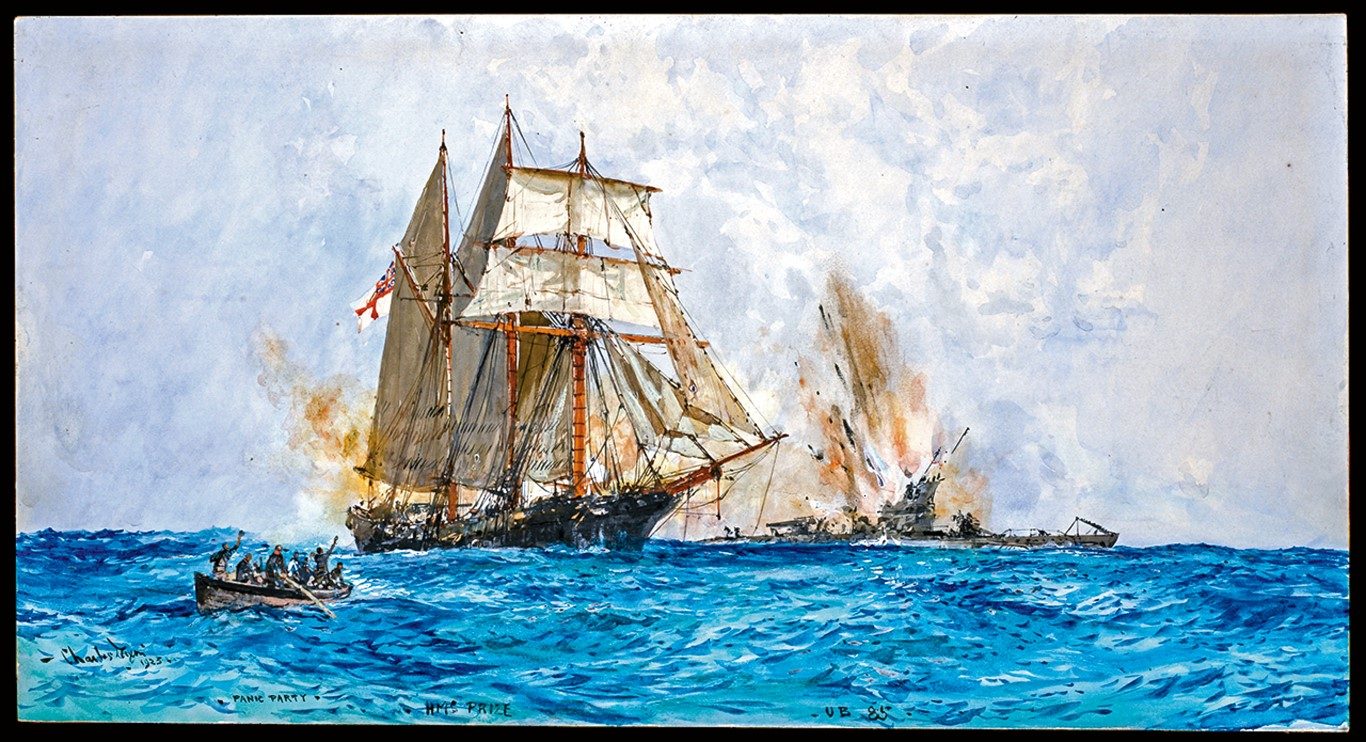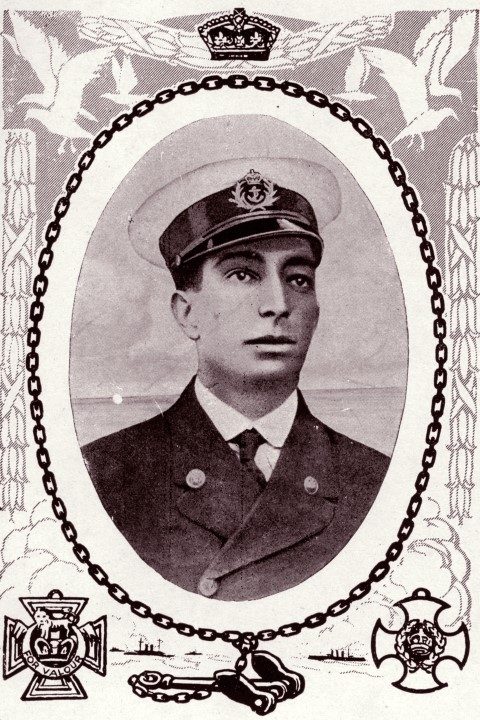

The Great War ripped the soul from the New Zealand public – but it also seeded a much-needed enthusiasm for the sport
of yachting. By Harold Kidd.
My generation took for granted the shell-shocked and maimed men in the shops and the streets, the damaged fathers, the uncles dead at Gallipoli and Passchendaele, the pain, the disenchantment and the bitterness. But there were positives arising from their shared comradeship under arms.
During the Great Depression that followed the war, their service experience and connections helped them to cope with the adversity and to look after one another. Again, they rose to weather the new World War in 1939 and the real threat of a Japanese invasion while our troops were in North Africa fighting Rommel’s Afrika Corps.
Indeed, there were some outstanding feats of courage by New Zealand servicemen during the Great War that inspired the country. In a recent article I told the story of yachtsman Cyril Bassett who won the Victoria Cross at Chunuk Bair on the Gallipoli Peninsula. This time it’s the turn of Lieutenant Commander W.E. Sanders who won the Victoria Cross in command of the Q Ship, HMS Prize.

From the outset of war in August 1914 German submarines presented a serious menace to British shipping. One of the methods the Royal Navy devised to destroy submarines was the use of armed decoy ships, known as “Q Ships”. These were innocent-looking vessels, flying neutral flags, often small sailing craft which were not worth a torpedo to a submarine. The Germans usually surfaced alongside such small fry and sank them by gunfire.
HMS Prize was one of these. She got that name from being the first prize vessel captured by a British cruiser a few hours after the declaration of war. She was the German topsail schooner Else.
The Admiralty took her over, fitted her with twin 50hp engines, two 12-pounder guns as main armament, one of which was concealed in a collapsible deckhouse and the other in the after hold, radio gear, and Lewis and Maxim machine guns. Sanders commanded her during her brief active service.
Sanders was a 34-year old Aucklander, a pupil of Takapuna Primary School. He had been at sea since he was 16, first as a cabin boy on the coaster Kapanui, then offshore in the merchant navy after he got his Master’s ticket.

In 1916 he went to England and was commissioned in the Royal Naval Reserve. His first taste of action was as second-incommand of the Q Ship HMS Heligoland, rigged as a brig, which had some hair-raising actions with German submarines from September 1916.
Prize was based at Milford Haven on the Welsh coast.
Sanders’ first offensive patrol was in the Atlantic, south of Ireland. On the evening of 30 April, 1917 he sighted the submarine U-93 approaching on the surface. The staged “panic party” manned the ship’s boat and pulled away. As soon as the submarine was in range, the White Ensign was hauled up and the 12-pounders were cleared.
They scored immediate hits on the submarine, blowing its captain and two others over the side, later rescued by Prize’s boat. Although Prize was heavily damaged in the action, and holed, she managed to return to base. For this action Sanders was awarded the Victoria Cross. The Q Ship programme was so secret that the Admiralty released no details of the action.
Three weeks later, after repairs, Sanders took Prize out on patrol again. On 12 June they encountered submarine UC-75 which approached the Q Ship with its gun in action. Holding her fire until the range closed, Prize opened up with its 12-pounders, but the submarine was able to submerge and escape, taking with it an accurate description of the Q Ship. Sanders was awarded a DSO for this action.
On 13 August 1917 Prize was out on patrol again, flying the Swedish flag, paired with the British submarine D6. This time it was UB-48 that closed on Prize; again the “panic party” took to the boat, again Prize returned fire with her machine guns and 12-pounders, again the submarine escaped, but lurked in the vicinity.
In the middle of the night of 14 August 1917, Prize showed a flash of light, maybe a matelot surreptitiously lighting a fag. UB-48 fired two torpedoes, the second a direct hit. Prize disintegrated in a terrific explosion. There were no survivors of her 27-man crew.
Paradoxically, the war affected New Zealand yachting in many positive ways. Many more youngsters were inducted into sailing to take the place of yachtsmen “at the Front”. After the war there was a vast increase in the numbers and types of small centre-boarders to meet their needs, while returning soldiers and sailors just wanted to go sailing.
After the armistice the pent-up desire to sail snowballed into a giant wave of enthusiasm that was out of step with the pre-1914 understanding that the future of the sport was in motorboats of one kind or another.
W.A. “Wilkie” Wilkinson was a pivotal figure in the sport. He had been the editor of the excellent New Zealand Yachtsman magazine which flourished from 1908 until 1918 and, post war, was “Speedwell”, the yachting correspondent of the Auckland Star. In 1916 he had promoted the New Zealand Yachtsman 14-footer design by Gladwyn Bailey as a onedesign class for competition.
Wilkinson was influenced by the Waitemata Dinghy Sailing Club’s wholesome restricted 14-footers which showed brief promise in Auckland between 1908 and 1910 but then migrated, mainly to Kawhia. In late 1916 Chas. Bailey Jr’s yard started building the first example, Desert Gold, named after a crack racehorse of the period, for Joe Patrick and Frank Cloke, engine drivers with N.Z. Railways.
She won the class for 14-footers in the North Shore Yacht Club, Auckland Anniversary and Ponsonby Cruising Club regattas in early 1917 but had little competition, being pushed by only Dixie of Jick Rogers, the sole remaining WDSC 14 left in Auckland. Desert Gold spent most of the following two years hauled out at Bailey’s yard without competition until Walter Bailey’s sons, Reg and Norman, built Betty in late 1918.

This was a difficult period. Many of our servicemen were overseas until well into 1919; the Spanish ‘Flu epidemic had caused huge civilian deaths at home in 1918 and 1919, and meetings and sports events were heavily curtailed to hinder the spread of the disease.
Bill Endean (see Vintage Perspectives, May 2018) was back from service with the RNVR in motor launches of the Dover
Patrol in early 1919. The Royal New Zealand Yacht Squadron had facilitated the recruitment of yachtsmen and launch owners to join the “wavy Navy” as experienced boat handlers.
Bill’s experience was comprehensive. He had been associated for years with the coastal cutters like Esk, Janet and Hauturu owned by his brother Jack and Capt. Edward Parris and had crewed on the 35ft launch Manu, built by Bailey & Lowe in 1913 and owned by his partner in law practice, J. A. Holloway.

In late 1920, after his thwarted attempt to buy the King of Tonga’s superyacht Onelua, Endean ordered a one-design 14-footer from Chas. Bailey. At the same time, Lord Jellicoe, the commander of the British Grand Fleet at the Battle of Jutland and a yachtsman, was appointed Governor-General and expressed considerable interest in the class.
Endean’s boat was under construction at Bailey’s yard but he graciously ceded the boat to Jellicoe who promptly set about racing the new 14-footer. He named it Iron Duke, after his flagship at Jutland. I suspect that Bill Endean would have called her Prize in honour of Sanders’ Prize.
Jellicoe was hugely popular with the New Zealand public. The silversmiths Walker & Hall donated a handsome trophy for competition in the class among New Zealand’s provinces. To add further potency it was called the Sanders Cup. The class simply took off and spread the yachting creed to every corner of New Zealand. The 14-footers soon became the X Class, providing great sport and great training for young Kiwi yachtsmen for another 50 years.
NEXT TIME Bill Endean teams up with Charles Bailey to produce the keel yacht Prize, a worthy substitute for Onelua.
Do you have a vintage story you would like to share with our readers? Contact Harold at: haroldkidd@boatingnz.co.nz




